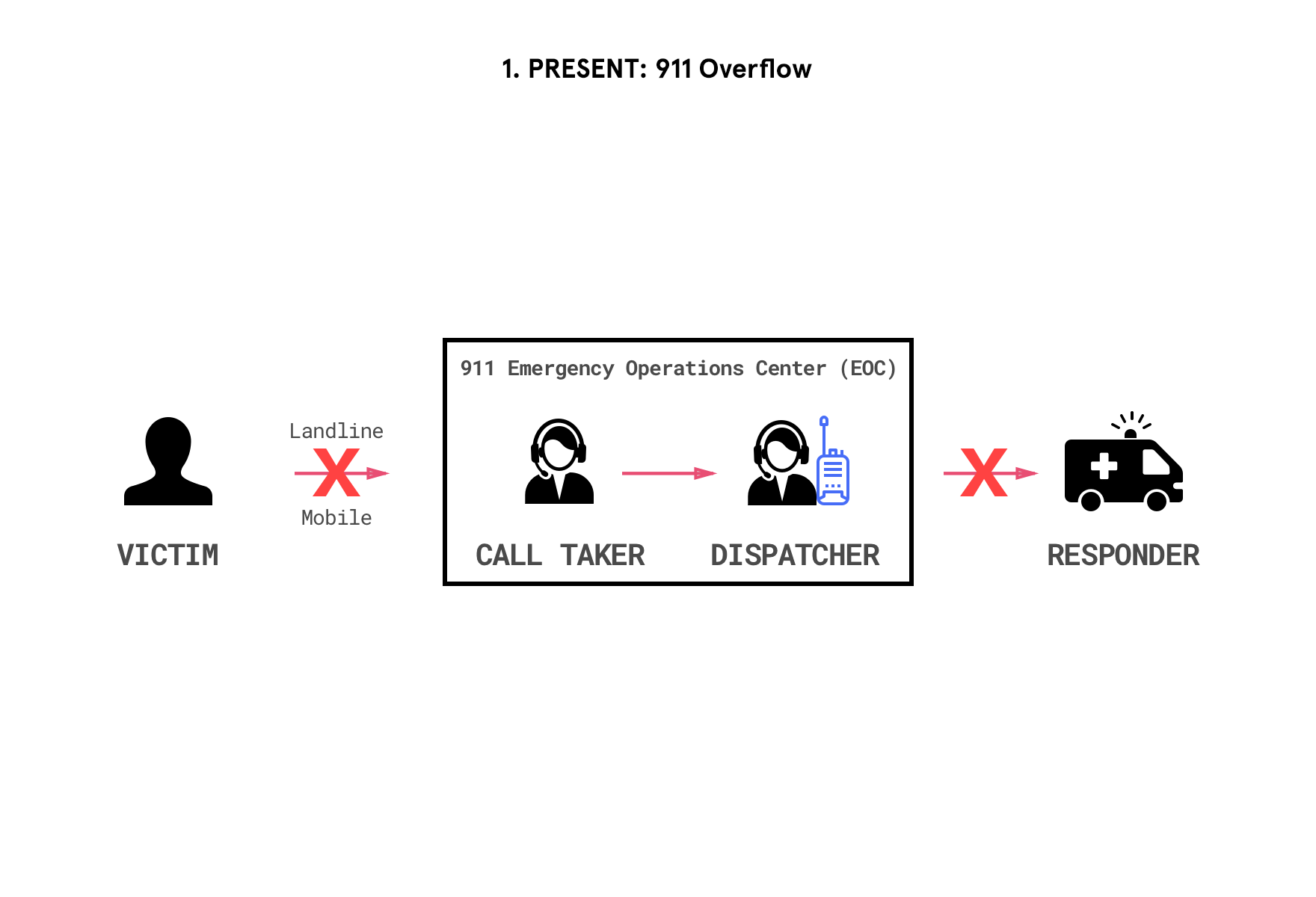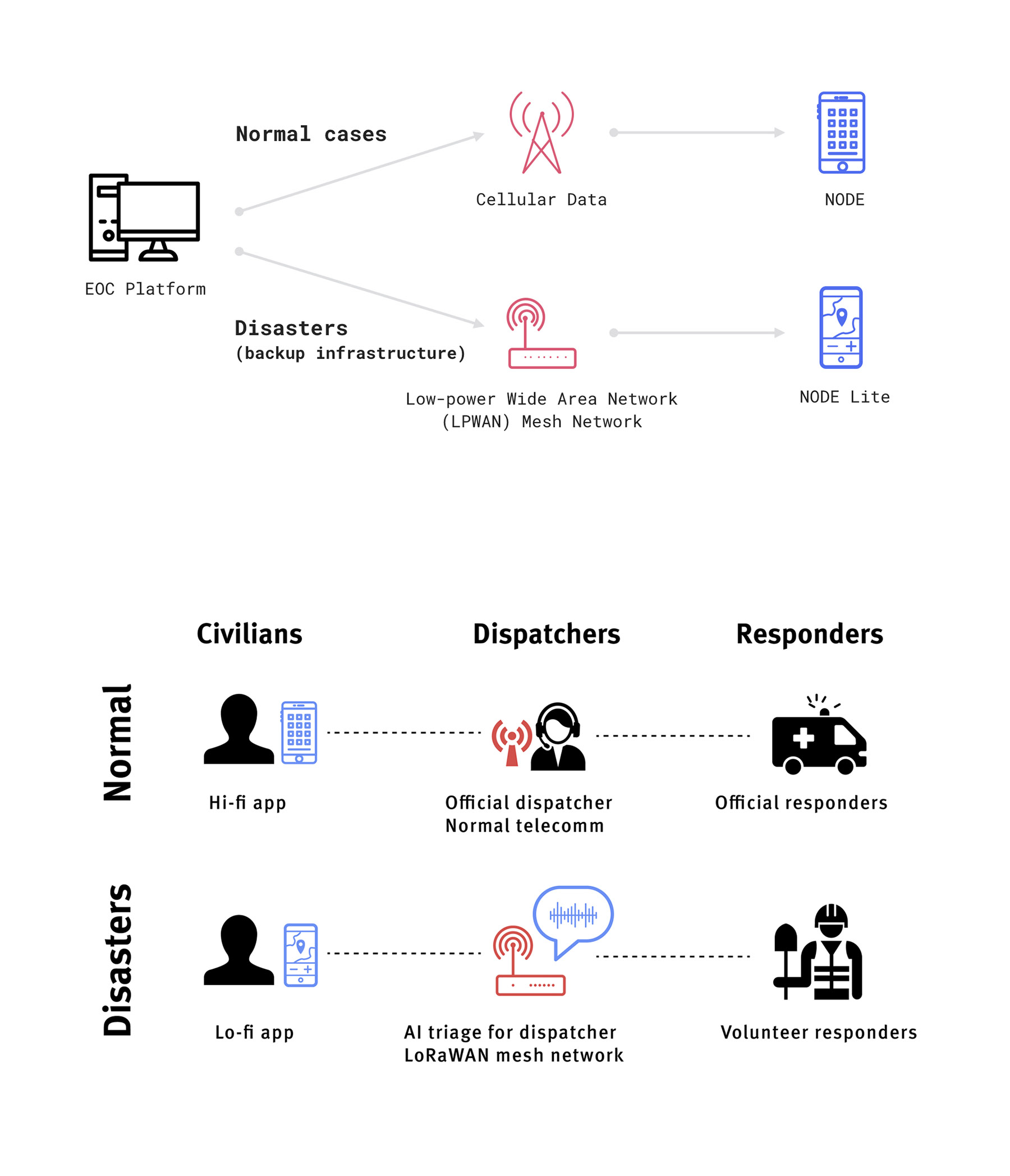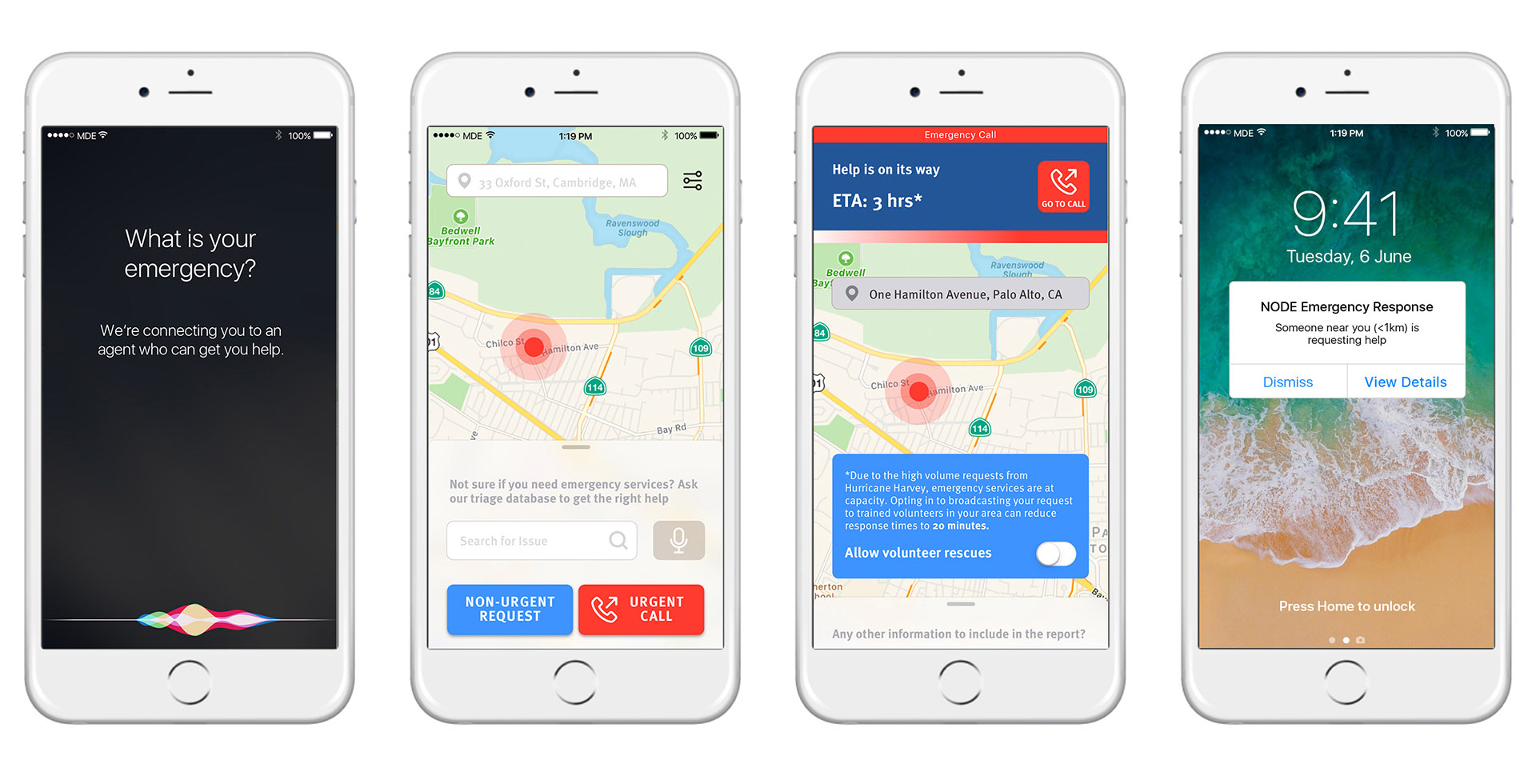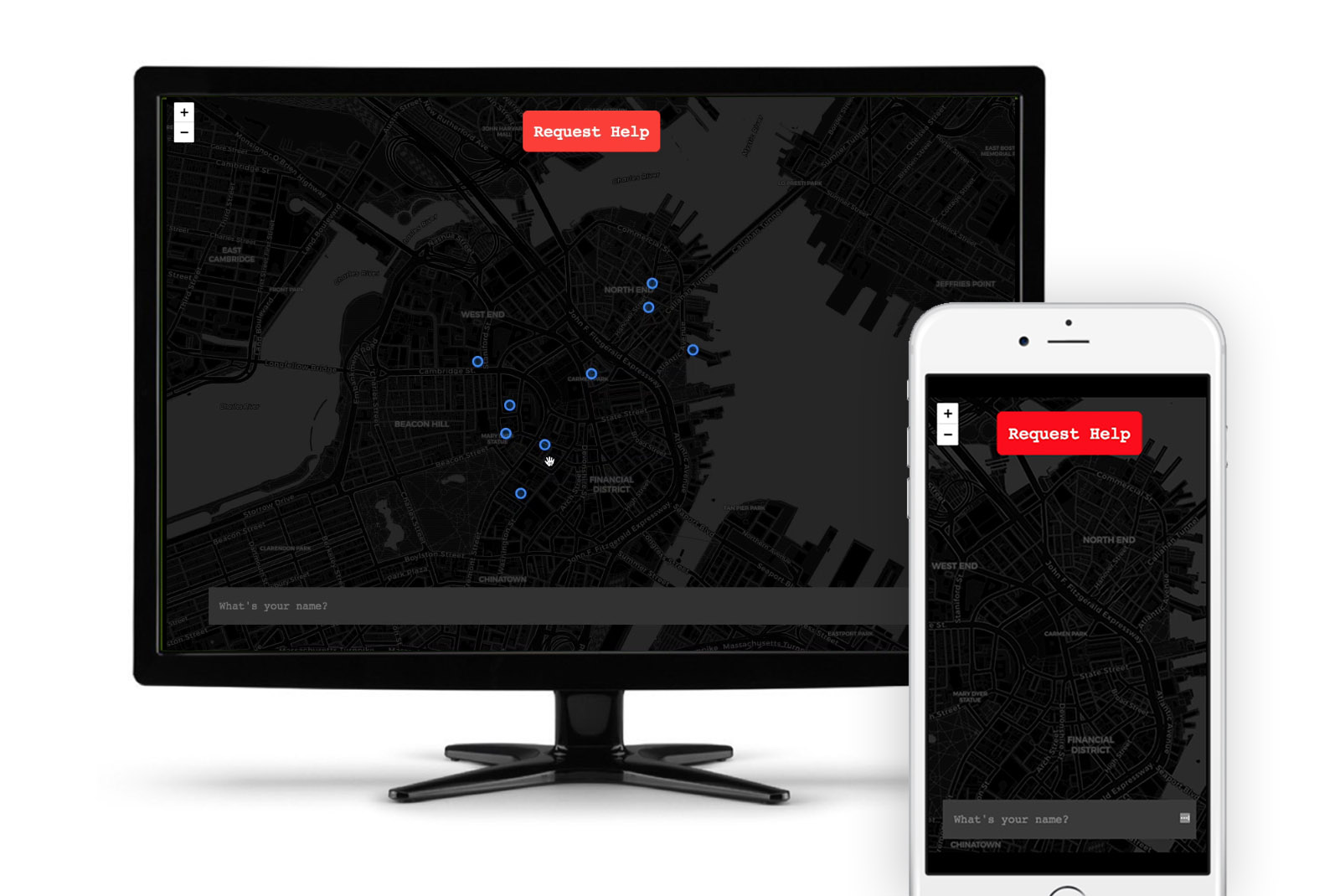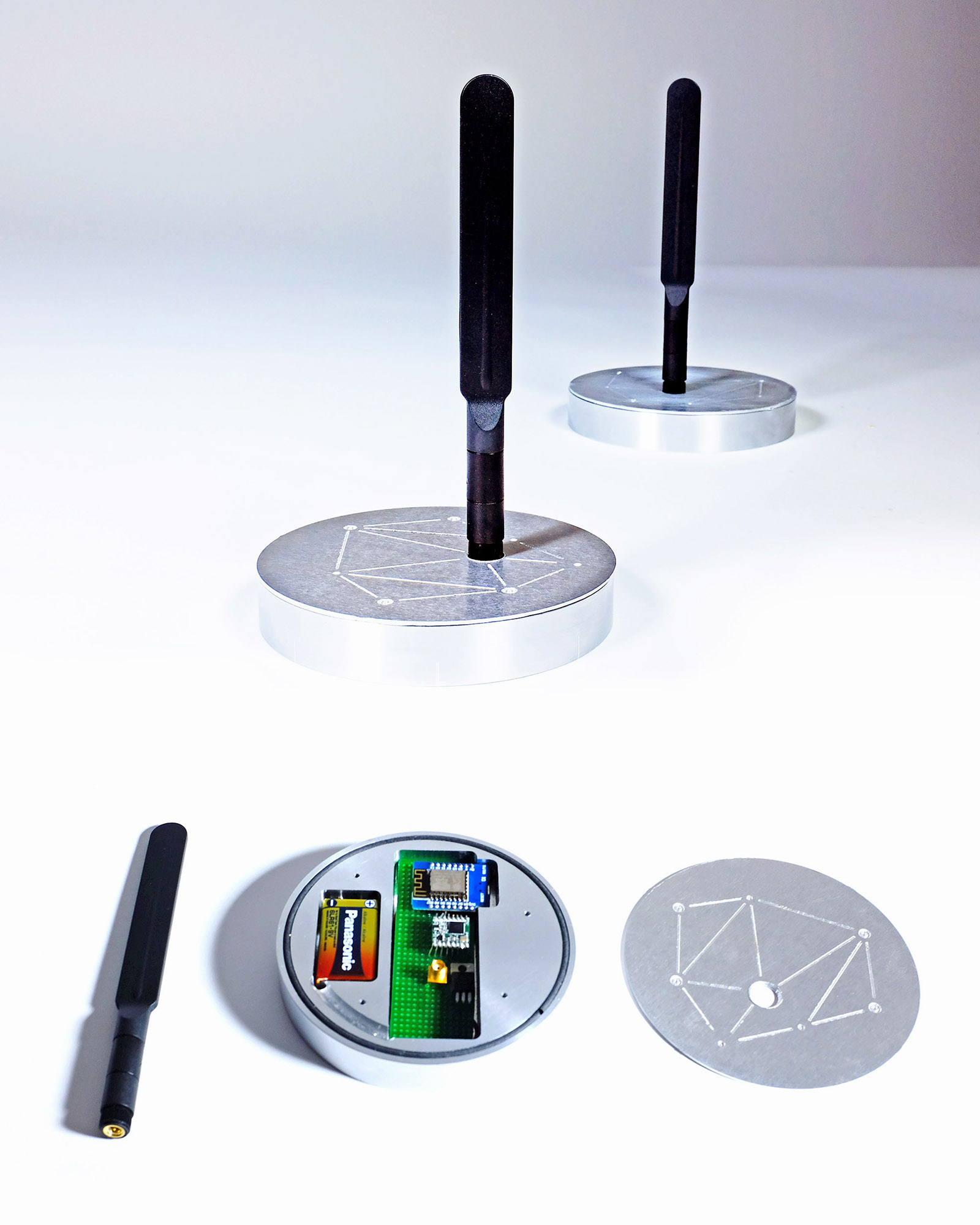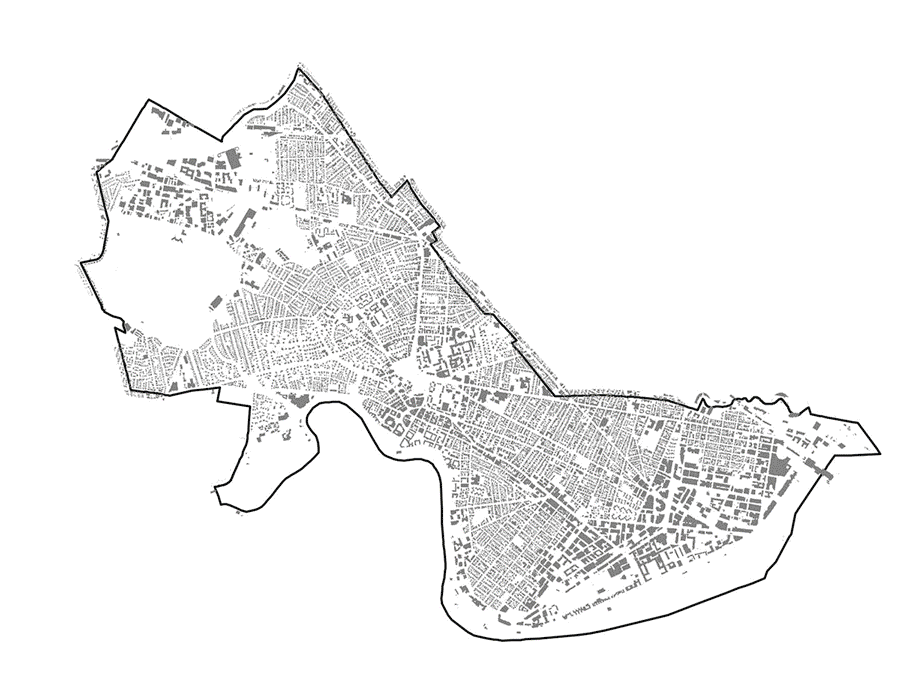Context
Natural disasters and other emergencies are impacting citizens more than ever. When these situations arise, official 9-1-1 emergency operation centers (EOCs) play a critical role in communicating and coordinating relief efforts and medical assistance. Despite this, EOCs rely on aging infrastructure built in the 1960s, a world with landlines, printed manuals, and radio frequency communication but no mobile phones, cloud databases, or Internet Protocol-based communication. While nearly 80% of 9-1-1 calls today come from mobile phones, most EOCs cannot accurately locate the location of the caller and must take the information down manually over the phone. The system isn't designed for the unprecedented scale of natural disasters that cities face today.
Impact
We designed Node, a reimagined emergency response (9-1-1) platform. It is a dual-mode emergency communications system can help cities become more resilient, supporting the day-to-day stresses of city life as well as handling extreme disaster situations gracefully. Using distributed wireless mesh network hotspots, Node improves the process of identifying and locating victims using a resilient low-bandwidth mesh network, especially when normal telecommunications are overwhelmed or incapacitated. The platform also allows official responders to coordinate with volunteer rescuers in disasters that overwhelm the normal system.


